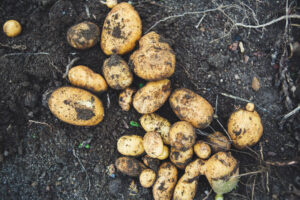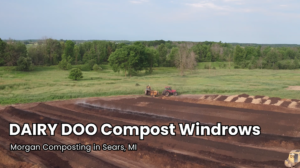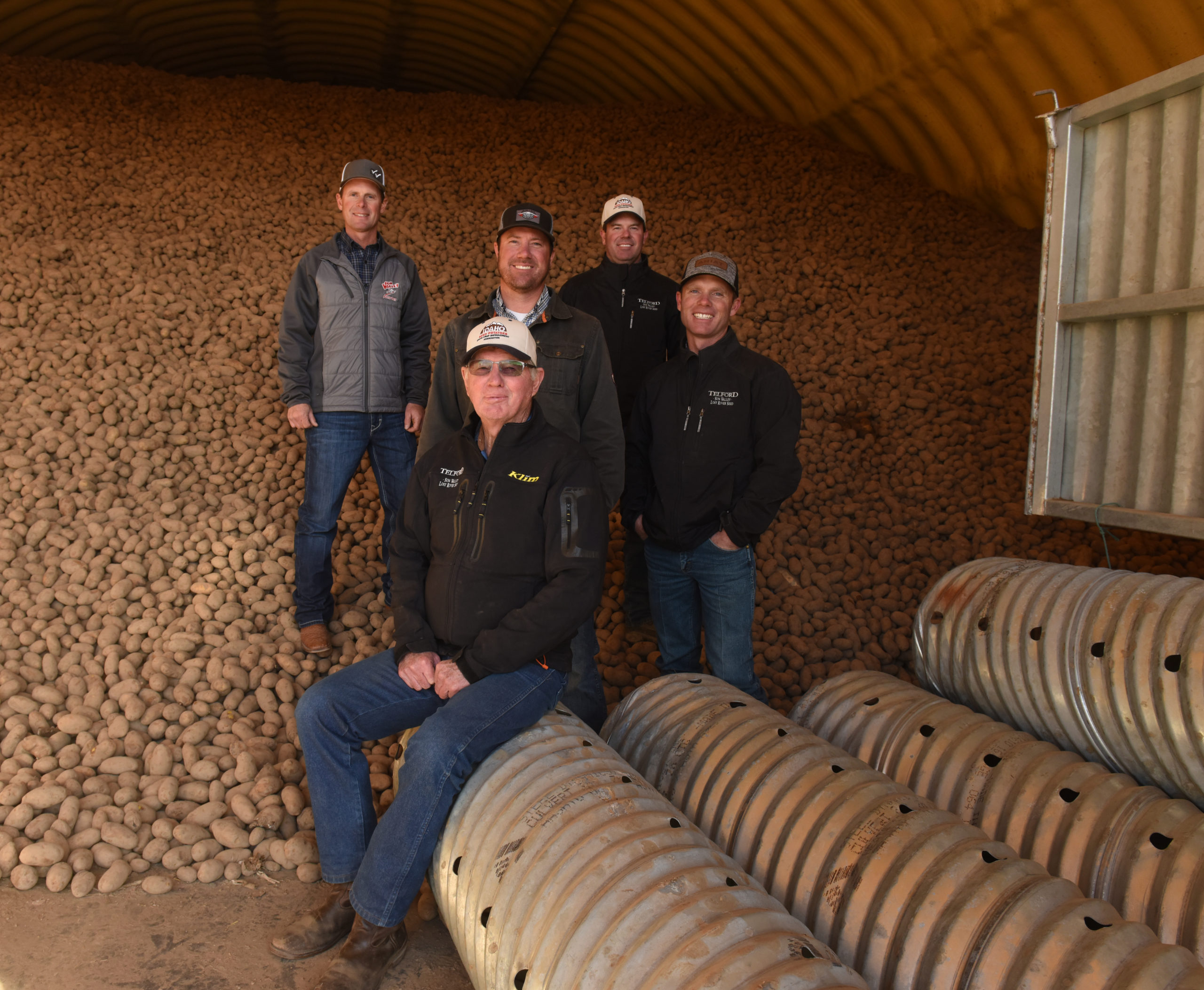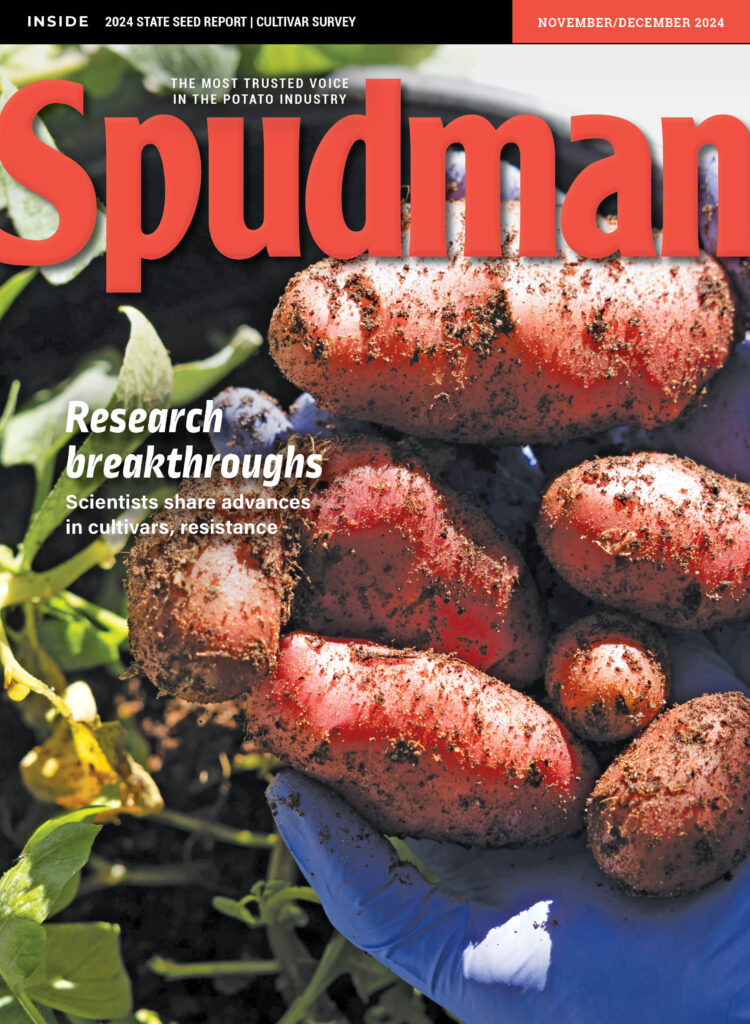
New cultivars helping to breed sustainable success
When defining sustainability in potato production, it may seem like there are as many interpretations as there are varieties.
While the Potato Sustainability Alliance (PSA) is bringing together stakeholders to collaborate and benchmark the benefits of water stewardship, soil health and input management, new potato cultivars are being bred to enhance the industry’s return on investment in sustainable and regenerative agriculture.

“There are so many wrinkles to sustainability and how to improve it,” said Jamie Suiter, key account manager with HZPC Americas, a PSA member.
“From a breeding standpoint, there are certain things we can control — resistance to certain diseases or not having to use pesticides as frequently. And cultivars can be bred for drought tolerance and limit the use of applied water while maintaining yields.”
TRIALING AND TRAITS
Controlling variables in potato production with sustainable cultivars holds economic and environmental promise. However, a one-size-fits-all approach with sustainable breeding can limit that potential.
In other words, a sustainable cultivar bred to thrive in the northwestern U.S. may not perform as well in northwest Europe. A key to the widespread success of sustainable potato cultivars is ensuring they can adapt to soil types, climates and growing conditions.
To help prioritize the performance of sustainable potato varieties, Netherlands- based HZPC collaborated with customers to define five traits — marketable yield, fertilizer, storability, crop protection and fresh water use — for some of their cultivars.
Each variety is bred to include sustainability traits that enhance growers’ abilities to measure and manage inputs.
“When we talk about using less inputs, that includes fertilizer, chemicals and water,” Suiter said. “It’s those three primary prongs of sustainability that every farmer, processor and breeder is looking to accomplish. And any new varieties we look to introduce are trying to accomplish at least two of those three sustainability prongs.”
For example, HZPC has a variety that is drought- and heat-tolerant, making
it adaptable to most climates. Another sustainably focused variety is for potato chips, bred for high yield with limited nitrogen use in drier climates.
Extensive trialing on a macro and micro level in real-world growing conditions is another important step in commercializing sustainable potato cultivars. But for sustainable varieties to gain traction with growers, Suiter said they will need to out- produce or out-value traditional varieties.
“There are different ways to evaluate sustainability ROI. It could be less waste.
It could be higher yield. It could be lower input usage,” Suiter said. “There could be a variety with low chemical and water usage, but if it doesn’t produce, it’s not going to provide that overall value growers need.”
Potatoes are a high-input, high-output crop, and while sustainability is gaining global momentum, so is the need to localize variety selection.
To help producers customize the right variety to suit their sustainability goals, HZPC developed an online tool allowing growers to select a market (fresh, french fries, chips) and the level of importance (less, average, more) for each of the five sustainability traits. They are then given a recommendation for a sustainable variety.
“We’ve seen more dramatic swings in climate, regulated water usage and restrictions on where and when chemicals are applied,” Suiter said. “The ability to pair a sustainable potato variety to growing conditions is going to allow farmers to stretch or save resources.”

‘FUTURE PROOFING’ POTATOES
While breeding sustainability traits into potato cultivars is gaining momentum, cross-breeding is another opportunity to make varieties more resistant to diseases and resilient in changing climates.
Genetically modified seeds have long been part of the corn and soybean growing cycle, but they have not been in potatoes. However, recent years have seen the development of tetraploid, diploid and hybrid potatoes, which could modernize the traditional growing process and enhance sustainability.
Cross-breeding certain varieties can potentially strengthen disease, pest and heat-resistant traits in future potato generations. Hybrid technology can allow potato breeders to increase per-plant production and improve nitrogen efficiency or starch quality.
While HZPC still traditionally breeds potatoes by crossing varieties (tetraploid), hybrid and diploid cultivars could further improve characteristics such as yield, disease resistance, taste, texture, and adaptability to different growing conditions.
Suiter said new breeding opportunities that safely and sustainably increase performance and production are evolving. But the ability to “future proof” potatoes from the ground up aligns with production goals and consumer expectations.
“In the commercial potato value chain, customers at restaurants and grocery stores want sustainable products and potato varieties,” he said. “Because of that demand, the value chain — from the field to the processing plants to the breeders — is becoming more sustainable today and in the future.”
5 TRENDS SHAPING SUSTAINABLE POTATO PRODUCTION
Stakeholders throughout the potato production industry are working to define and prioritize the most valuable qualities to develop resilient, resistant varieties. Here are five trends emerging from ongoing research and development of sustainable potato varieties:
- Disease resistance: Potatoes are susceptible to various diseases, such as late blight and potato cyst nematodes. One of the primary trends in sustainable potato varieties is the development of disease-resistant cultivars to reduce the need for pesticides without sacrificing yield.
- Reduced carbon footprint: Some potato varieties are being selected or bred for their ability to sequester carbon in the soil, contributing to carbon sequestration and reduced greenhouse gas emissions.
- Drought tolerance: With changing climate patterns and increased water scarcity or restrictions in some regions, there is a growing focus on breeding potato varieties that can thrive in drought conditions and conserve water.
- Market demand: Consumer demand for sustainably grown and locally sourced foods is driving the adoption of sustainable potato varieties. Farmers respond to this demand by cultivating potato varieties well-suited to their local ecosystems and market preferences.
- Collaborative research: Collaboration between public and private institutions, as well as international partnerships, is playing a crucial role in developing and disseminating sustainable potato varieties. These partnerships help accelerate breeding efforts and ensure widespread access to sustainable potato seeds.







